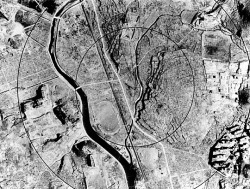The Pacific War
Hiroshima and Nagasaki

On August 6, 1945, an atomic bomb was dropped onto Hiroshima by a B-29 bomber named Enola Gay. Few seconds later, more than half of Hiroshima's cities were destroyed and 80,000 people died directly from the bomb. By the end of the year Injury and radiation poisoning effected 90,000 to 140,000 casualties in Hiroshima. Still, Japan would not surrender, so the United States bombed Nagasaki a few days later. The destruction in Nagasaki was not as bad as the destruction in Hiroshima. In total, an estimated 200,000 people had died just by injury and radiation poisoning all together. Finally on September 2, Emperor Hirohito surrendered because he was horrified by the damage the atomic bombs had done. The surrender ceremony took place on the U.S. battleship Missouri in Tokyo Bay. After, Japan was occupied by U.S forces under the command of General Douglas MacArthur. He reshaped Japan's economy by introducing free-market practices that led to economic recovery and Japan started to rebuild Hiroshima and Nagasaki.
